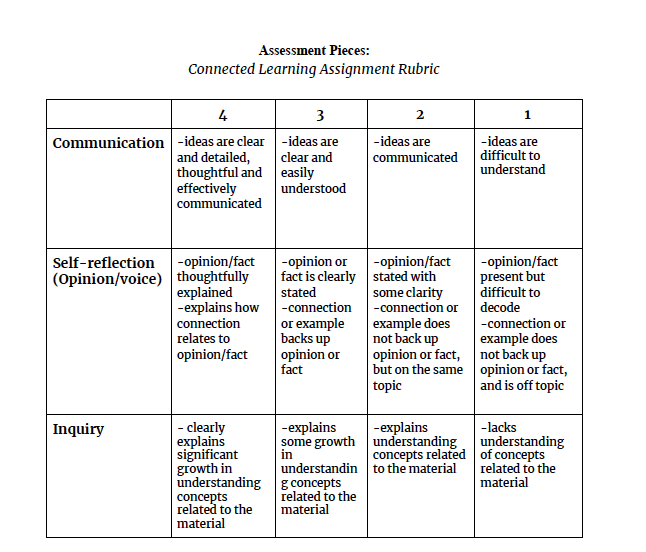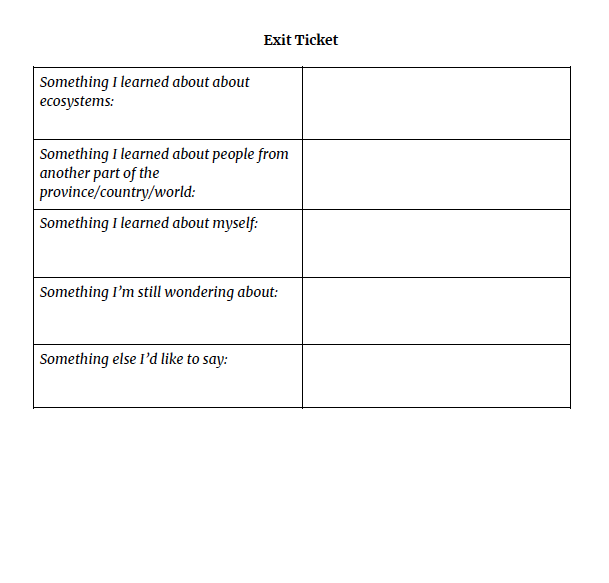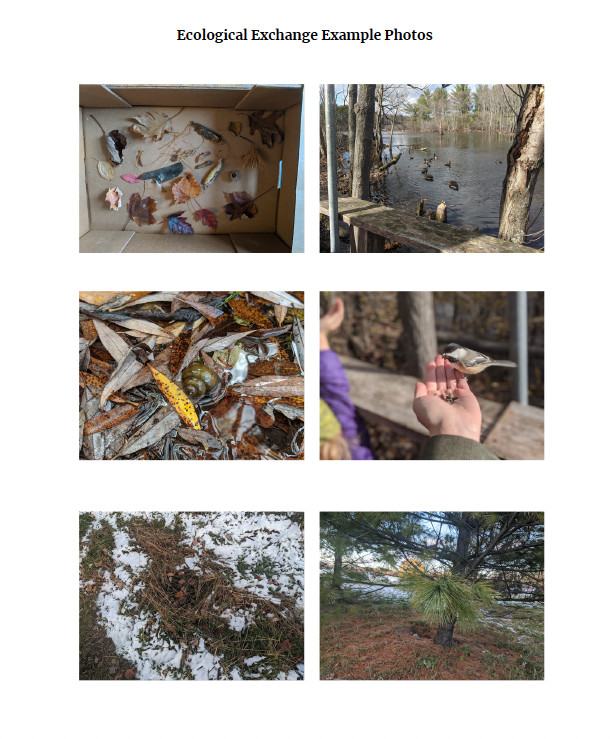Deep Learning via Connection
- Erin Goody

- Nov 22, 2019
- 6 min read

Below is a lesson based around incorporating the 6 C's of 21st Century learning: character, collaboration, creativity, communicating, critical-thinking and citizenship.
My lesson is made up of a few deep learning activities that explore some uncomfortable realities of our world but in a way that allows students to feel empowered to help out and make a difference in their communities.
It is important for today’s youth to feel empowered to be able to make a difference both in their local communities as well as the greater international community at large. Within that, it is important for youth to also be able to make connections between their learning experiences within the classroom and the myriad of challenging experiences that they may or may not be aware of. The Bridge Home by Padma Venkatraman is a story that explores child poverty and homelessness in Chennai, India through themes of environmental awareness, what it means to be a family, and is a part of 2019’s Global Read Aloud contenders. By using this book both as a jumping off point and unit guide, students are able to gain a rich and holistic view of the world around them and begin building character while ruminating themes of social and environmental justice. By engaging with the Global Competencies through a social justice lens we can incorporate citizenship, character education, creativity, critical thinking, communication and collaboration to provide deep, meaningful, and relevant learning opportunities.
An eco-exchange is an engaging, student-led way to bridge science with community, connection, and international relationships. Students will venture out into their communities and collect a series of objects that represent their local ecosystem (they can do this by either actually collecting fallen samples and/or by taking photos of each object). Students will then be asked to classify the objects that they have collected and to think about each item in terms of its impact within the ecosystem it is a part of. Students will also be asked to notice visible human impact from energy sources on their local ecosystems (ex. Power lines and nesting osprey; hydroelectric dams and aquatic flora and fauna; etc.) Students will be encouraged to think about why they’ve included each sample and what it means to have something exist in their city, province, or country that does not naturally exist in another. Probing questions can include: What does it take for something like this to grow here? How does it impact the other plants/animals in the area?
By way of the Global Read Aloud, the class will be able to connect with other students and educators from all over the world and exchange ecological objects from their local environments. This exchange facilitates in students an interest in the world around them as well in the environment as it exists in other countries. The class will be asked to collaborate together to create one box from all of their ecological findings and send it to another group of students (although it would be great to involve more than one other class!). Students will be encouraged to be creative in thinking about what to include in their box beyond the ecological objects. The class may come up with ideas like:
A checklist of items included so the students can cross reference with their own, local ecosystems
Pictures of the students in the spots where they found each object
A letter from each student introducing themselves and explaining why each item was included
An activity guide that builds off the items included in the box (ex. Set up a class-wide debate arguing for and against developing on top of local wetlands to build community housing using perspectives of developers, people advocating for the environment, and residents of the local community; discuss how homelessness is handled by your country’s policies versus non-profits; how is a person’s experience with homelessness impacted by their lack of access to energy sources?)
After the exchange has taken place and both classes have had the opportunity to thoroughly investigate their eco-boxes, the classes can converge via Skype and have a discussion about their findings. Prior to this conversation, the students should discuss what and how they want to communicate to the other group of students. If Skype is not possible due to time or technological constraints, letter-writing is an excellent alternative. Culminating this activity, students will be asked to create a reflection piece, this could be a piece of writing, art, audio or other media. This reflection will be assessed using the attached rubric as well as an exit ticket to further enhance self-reflection.
As educators, we strive to create transformative learning environments for students, places where students take responsibility for their own learning and inquire about the world around them, where struggle, failure, and resilience are a part of the educational process. It is incredibly important for students to learn these concepts but it is equally important for students to be able to use what they’ve learned in a way that benefits themselves and the world around them. I believe that this activity is a practical means of addressing each of the Global Competencies in a way that allows for students to become invested in their own learning, to build their scientific vocabulary in a way that is relevant to them and their lives, and to value making connections with people and the environment. It also provides students with an opportunity to re-contextualize elements from their local, living environments in new and exciting ways. I see this activity as being part of a greater conversation within the classroom about environmental stewardship, sustainability, social justice, and critical-thinking and could easily lead into wonderful and impactful enrichment opportunities for the whole class.
A few notes:
To build off of The Bridge Home and to start conversations surrounding what citizenship looks like, while collecting their samples students should be encouraged to think about their local community and problem-solve what being homeless/street involved in their ecosystem might look and feel like and how it may be different to the experiences of the characters in the book. It is important to facilitate this conversation in a way that is true to the lived experiences of people who are homeless. Perhaps start by asking students to think about why someone might find themselves in a homelessness situation. It would be invaluable to have a guest speaker in the classroom who can speak to this, someone who has done street outreach supporting the local street population and/or a person who has experienced homelessness and is willing to educate students on the realities of that experience as well as what can be done to help. When engaging the class in discussions about potentially triggering topics it is important to let students know that if they feel uncomfortable they are welcome to step out and go to a safe space within the school (perhaps the Learning Commons) with a token that let’s the other educators know that they are allowed to be out of class.
Since students will likely be discussing people from countries who are not their own, it is important to ensure that other countries, cultures, and people are not romanticized, homogenized, or essentialized within the classroom when facilitating this activity. There needs to be a concentrated educator-led effort on disaggregating colonial discourse within the classroom. In my classroom I would have an ongoing conversation surrounding why it is important to think critically about the types of information we receive via mass media regarding people from countries other than Canada and how to ensure we aren’t “othering” people who we perceive to be different from us.
Curriculum Connections:
Grade 6 Science
Understanding Life Systems: Biodiversity
1. assess human impacts on biodiversity, and identify ways of preserving biodiversity;
2. investigate the characteristics of living things, and classify diverse organisms according to specific characteristics;
3. demonstrate an understanding of biodiversity, its contributions to the stability of natural systems, and its benefits to humans.
Electricity and Electrical Devices
1. evaluate the impact of the use of electricity on both the way we live and the environment;
Grade 6 Language
Oral Communication
2. use speaking skills and strategies appropriately to communicate with different audiences for a variety of purposes;
Reading
1. read and demonstrate an understanding of a variety of literary, graphic, and informational texts, using a range of strategies to construct meaning;
Writing
1. generate, gather, and organize ideas and information to write for an intended purpose and audience;
2. draft and revise their writing, using a variety of informational, literary, and graphic forms and stylistic elements appropriate for the purpose and audience;
Grade 6 Social Studies
People and Environments: Canada’s Interactions with the Global Community
B2. Inquiry: use the social studies inquiry process to investigate some global issues of political, social, economic, and/or environmental importance, their impact on the global community, and responses to the issues (FOCUS ON: Cause and Consequence)
Links
The 6 C's - 21st Century Learning Skills
The Global Read Aloud - Facebook Page for classes reading The Bridge Home
Edutopia - Setting Up an Ecological Exchange
https://www.edutopia.org/article/setting-ecological-exchange
The Global Read Aloud - List of 2019 Contenders
https://theglobalreadaloud.com/for-participants/contenders/2019-contenders/
The Global Read Aloud - Main Facebook Group
Homeless Hub - Community Profile - Ottawa
Ottawa Mission - Story of Homelessness
Ottawa Innercity Ministries - Street Outreach
https://www.ottawainnercityministries.ca/services/street-outreach/
The Learning Partnership - Entrepreneurial Adventure Program
https://www.thelearningpartnership.ca/programs/entrepreneurial-adventure
Othering and Belonging - The Problem of Othering
http://www.otheringandbelonging.org/the-problem-of-othering/
ETFO Website - Assessment











Comments